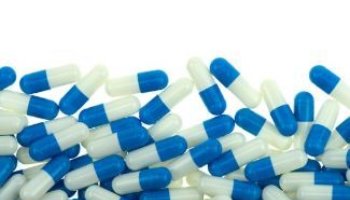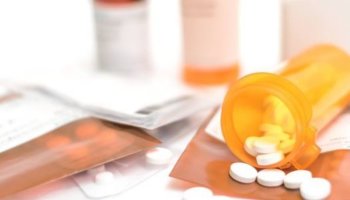‘For both medicines and medical devices there is a need for more robust, publicly accessible post-marketing surveillance.’
First Do No Harm report, 8th July 2020
In July 2020, the ‘First Do No Harm’ report was published. The report summarised the results of an independent review into the long-term harm caused by 3 different treatments in the UK, including sodium valproate - an effective medication for epilepsy that is known to be harmful to unborn children. Just this last week, a debate in the UK parliament highlighted how little progress has been made towards addressing the recommendations within the report.
Over several decades, women of childbearing age taking sodium valproate for epilepsy had not been properly informed regarding risks of teratogenicity and therefore likely harm to their unborn babies.
“They did not know that the chances were one in two – one in two damaged babies - what a tragedy.” Baroness Cumberlege, Independent Medicines and Medical Devices Safety Review, July 2020
The findings of the report, whilst tragic on an individual basis, provide a stark, real-life example of why safety monitoring and timely communication of findings are absolutely essential across life sciences. This starts during clinical trials where the number of patients is low and exclusions limit the participation of many groups (e.g. women) but must extend rapidly into proactive post-approval monitoring to ensure the true safety profile is established rapidly.
So, what went wrong?
When first approved in the early 1970s there was understandably little information about the safety of sodium valproate during pregnancy, however, there were pre-existing concerns about the teratogenicity of all antiepileptic drugs. This was a clear indicator of the need for post-marketing surveillance to gather data into the extent of the risk, and yet it wasn’t until the 1980s that case reports began to be published, with the first prospective studies beginning in 1983 and the first registries established in the 1990s. That means it took decades before the risk of exposure to sodium valproate in utero could be calculated.
What does this mean?
There are 3 aspects of failure that contributed to the suffering of all those involved:
1. Understanding safety: The opportunity to systematically collect safety information across different patient groups was not acted upon. This means that important safety signals were not identified and consequently prescribing continued in the belief that the benefit-risk profile in pregnant women remained positive.
2. Communication: Without reliable data, communication on the use of medicines is meaningless. In this case, communication failed right across the board, with patients, healthcare professionals, and even the regulatory bodies unaware of the extent of the risk
3. Accountability: The report also highlighted the failing of the healthcare system to listen to the experiences of those impacted. The report documents that family physicians and even specialists seemed to lack understanding of the symptoms being presented and frequently dismissing families’ concerns.
“Patients often know when something has gone wrong with their treatment. All too often they are the first to know. Their experience must no longer be considered anecdotal and weighted least in the hierarchy of evidence-based medicine.” Baroness Cumberlege, Independent Medicines and Medical Devices Safety Review, July 2020
Taking responsibility for the future
The recommendations in the report are clear: ‘For both medicines and medical devices there is a need for more robust, publicly accessible post-marketing surveillance.’ ‘The spontaneous reporting platform for medicines and devices…needs reform. It needs to provide a user-friendly, accessible, transparent repository of adverse event reports.’
Pharma is embracing ‘patient centricity’ as a means to understanding the challenges patients face with their diseases, how medicines can be used more effectively, and importantly, the adverse events that cause distress, harm, or non-adherence. Despite the drive to get closer to patients, the systems to collect safety information are opaque and either based on traditional (telephone) reporting or in many circumstances, the technology used provides a poor user experience compared to that in other industries. Consumers need easy to use and informative ‘Digital-First’ solutions that are designed with their needs in mind.
Patients want transparency and want evidenced-based medicines that they can trust. Inevitably evidence concerning safety evolves over time as an ever greater and more diverse population gets exposed. Patients and healthcare professionals expect omnichannel solutions available 24/7/365 that provide them ready access to the most accurate information in real-time while simultaneously enabling recording issues concerning adverse events or product quality. Most often medical information and safety reporting form part of the same interaction therefore having a digital platform to encompass both provides the most seamless and effective offering.
This is a new approach for pharma as traditionally medical information, customer relations, and pharmacovigilance departments predominantly work independently. By working together to implement an integrated system that enhances the front-end customer experience, data quality is improved through reduction in handoffs, and processes are streamlined.
The introduction of digital interfaces is not intended to replace human interactions, but rather to augment it by providing an immediate channel to address most information requests and capture adverse event reports while triaging more complex inquiries and events for more detailed follow-up by call centres and specialists. Moreover, by making it simple to report a problem, pharmacovigilance teams can quickly access a robust body of data that enables them to build a true picture of product safety, faster.
And that brings us back to the inspiration for this blog 'No-one is listening’ - as an industry, we’re privileged to be in a position where we can make a material difference to the lives of millions of people around the world. Our contract with patients is to act with honesty, transparency, and integrity and provide their healthcare professionals with medicines that are supported by evidence. It is only then that the healthcare system we serve can trust what we do, believe in the treatments we deliver, and make the best possible decisions for their patients.
References
First Do No Harm. The report of the Independent Medicines and Medical Devices Safety Review
Independent Medicines and Medical Devices Safety Review Press Conference Speech 8 July 2020









